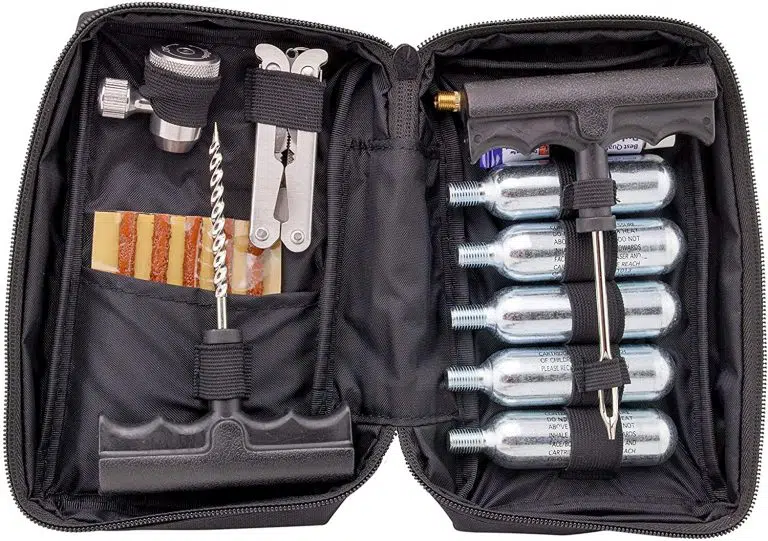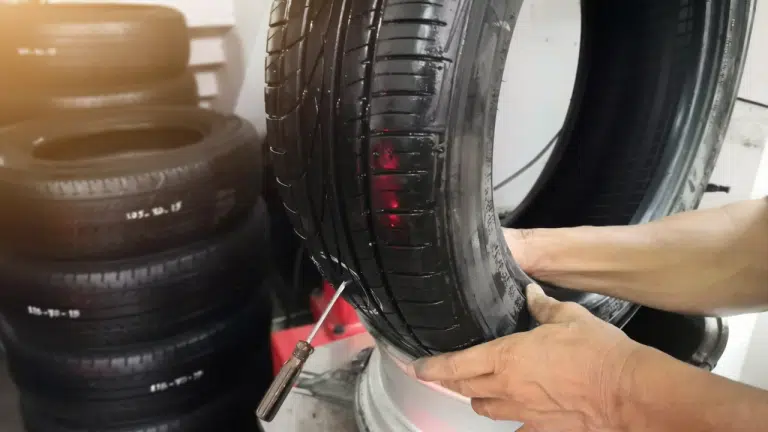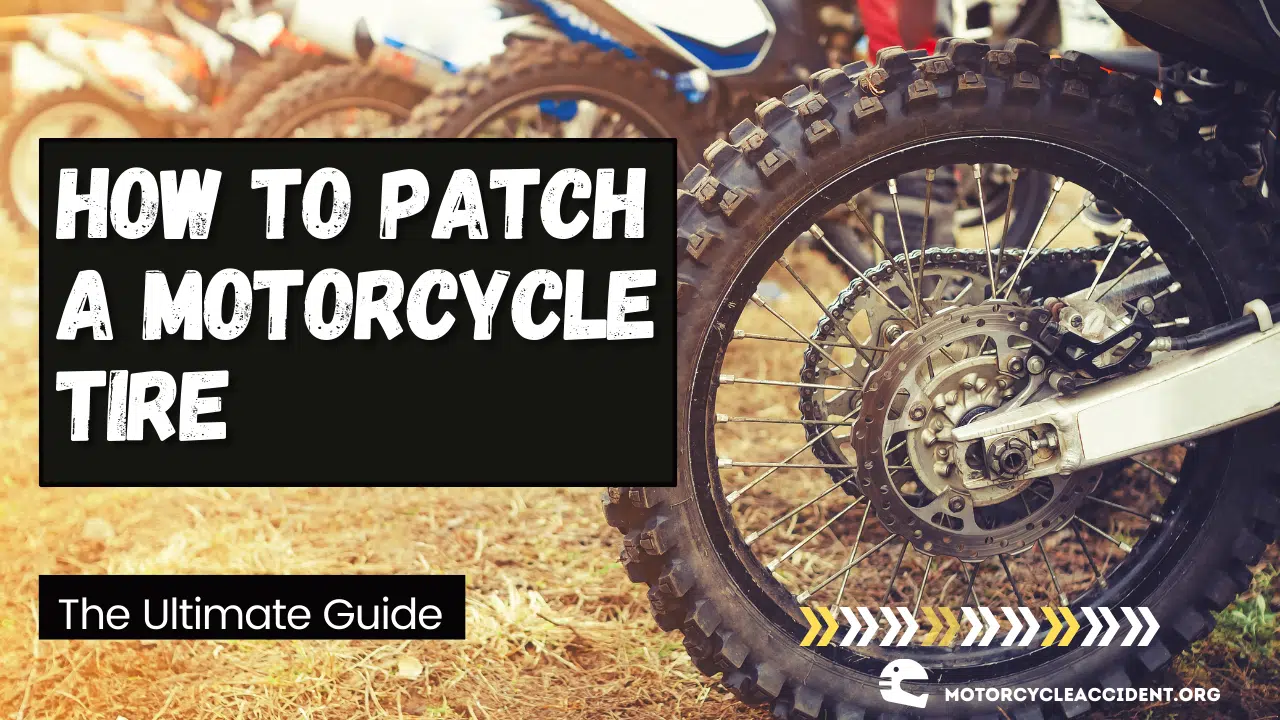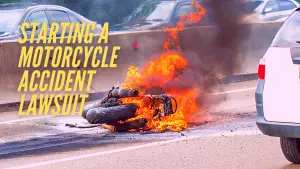If you’re a motorcycle rider, eventually, you’ll have a flat tire. It’s just something that comes with the territory. But don’t worry, patching a motorcycle tire is easier than you might think! In this guide, we will walk you through the entire process step-by-step. So whether you’ve never patched a tire before or if you’re an experienced pro, this guide has got you covered. Let’s get started!
What is a Motorcycle tire patch?
A motorcycle tire patch is a product used to repair punctures or leaks in motorcycle tires. It is a temporary fix typically used until the tire can be adequately repaired or replaced. The patch is applied to the outside of the tire and then sealed with an adhesive. This type of repair is not permanent and should be checked regularly to ensure that it remains. While it is not the best solution, it can be a lifesaver if you are stranded on the road with a flat tire.
What are the necessary supplies needed
If you’re a motorcycle enthusiast, then you know that flat tires are just part of the territory. But don’t worry – with the right supplies, patching a tire is easy. Here’s what you’ll need:
A puncture repair kit should include a rasp tool, glue, and patches.
A tire pressure gauge: This will help you check your tire’s pressure before you start patching it.
– A Phillips head screwdriver: This will come in handy for removing the valve stem cap.
– A clean cloth: This will be used to wipe away any debris from the tire before patching it.
What to consider before patching a motorcycle tire?
Before you patch a motorcycle tire, there are a few things you’ll want to take into consideration. First, what type of tire do you have? There are panel tires, tubeless tires, and tube tires. Each requires a different kind of patch. Second, what is the size of the hole? If it’s less than 1/4 inch, you can probably get away with just using a plug. Anything more significant will require a patch. Third, what is the cause of the puncture? If it’s from a nail or other sharp object, you may be able to pull it out and patch it from the inside. However, if the hole is from something like a slice or tear, you’ll need to patch it from the outside. And finally, how much time do you have? If you’re in a pinch and need to get back on the road quickly, a temporary fix like duct tape can work in a bit. Otherwise, take your time and make sure the patch is secure.

How to patch the motorcycle tire?
You’re out on a ride, and you get a flat. You’ve got a patch kit with you, so you pull over to the side of the road and get to work. First, you need to remove the tire from the wheel. If you have a tubeless tire, this is just a matter of removing the valve stem and letting the air out. If you have a tube-type tire, you’ll need to use a tire iron to break the tire’s bead away from the rim. Once the tire is off, locate the hole in the tube and mark it with a piece of chalk. Then, use the tire iron to pry the edge of the hole open to fit the patch over it. Apply some rubber cement to both the tube and patch, then press them together firmly. The last step is to re-install the tire on the wheel and inflate it to the proper pressure. With a bit of practice, you’ll be able to patch a flat tire in no time at all.
How long will the patch last?
There’s no definitive answer to this question, as it depends on several factors, including the quality of the tire patch, the type of motorcycle tire, and the riding conditions. They are generally speaking. However, a tire patch will last for several months or more if properly installed and maintained. Of course, it’s always a good idea to keep an eye on your tires and check them regularly for any signs of wear or damage. If you notice any issues, it’s best to have a professional take a look. Your motorcycle tires should give you many years of trouble-free service with proper care and maintenance.
FAQs about How to patch the motorcycle tire
You’re out for a leisurely Sunday ride when you hit a pothole and hear a telltale hissing sound. You pull over to the side of the road to assess the damage and see that you’ve got a big gash in your motorcycle tire. Now you’re stuck on the side of the road with a flat tire. But don’t worry, we’re here to help. Here are some FAQs about how to patch a motorcycle tire.
Can I plug the hole?
Yes, you can plug the hole, but it’s not the best option. A better option is to patch the hole from the inside. It will create a more robust seal and help prevent further air leaks.
How do I know if I can patch my tire?
The best way to tell is to take a look at the puncture. It can probably be patched if the hole is less than 1/4 inch in diameter. You’ll probably need to replace the tire if it’s bigger than that.

What kind of patches should I use?
There are a few different types of patches that can use on motorcycle tires, and the best type to use will depend on the size and location of the puncture. For minor punctures, you can use tubeless tire plugs. These plugs are inserted into the tire through the valve stem, and they expand to fill the hole. For larger punctures, you can place a patch over the hole from the inside of the tire. The tire must be dismounted and the inner tube removed to do this. The patch is then placed over the hole and glued into place. Once the glue has dried, the inner tube can be reinflated and inserted into the tire. If you’re not comfortable performing this repair yourself, it’s best to take your bike to a qualified mechanic.
Is it safe to ride on a patched tire?
Yes, riding on a patched tire is safe as long as the patch is done correctly. Remember to check your tire pressure regularly and inspect your tires for any signs of wear or damage. If you have any concerns, it’s best to have a professional take a look.
Conclusion
So, there you have it – everything you need to know about how to patch a motorcycle tire. We hope this guide was helpful and that you now feel confident in your ability to fix a flat on the go. Please let us know in the message section below if you have any questions. And finally, always remember to ride safe!






